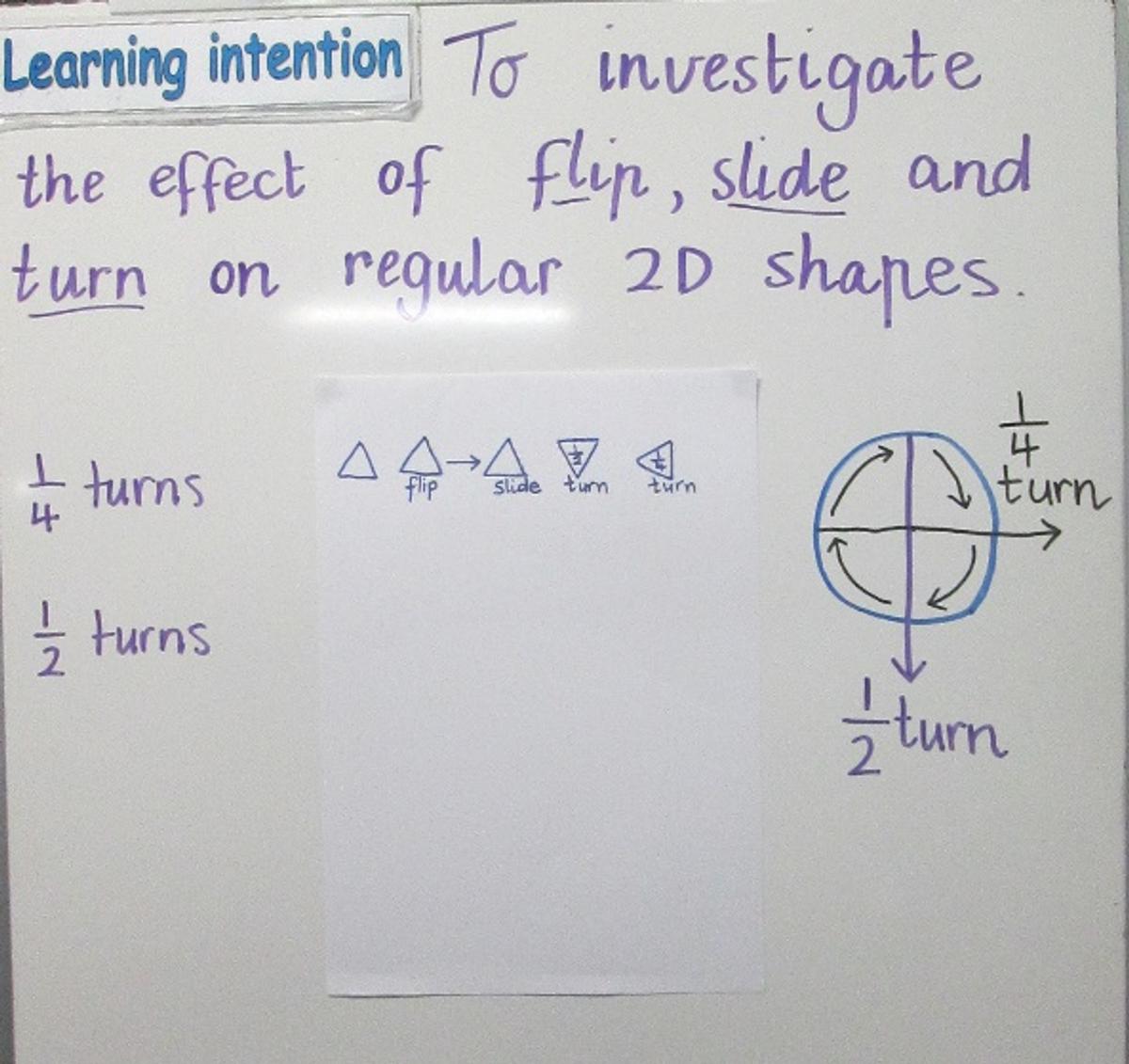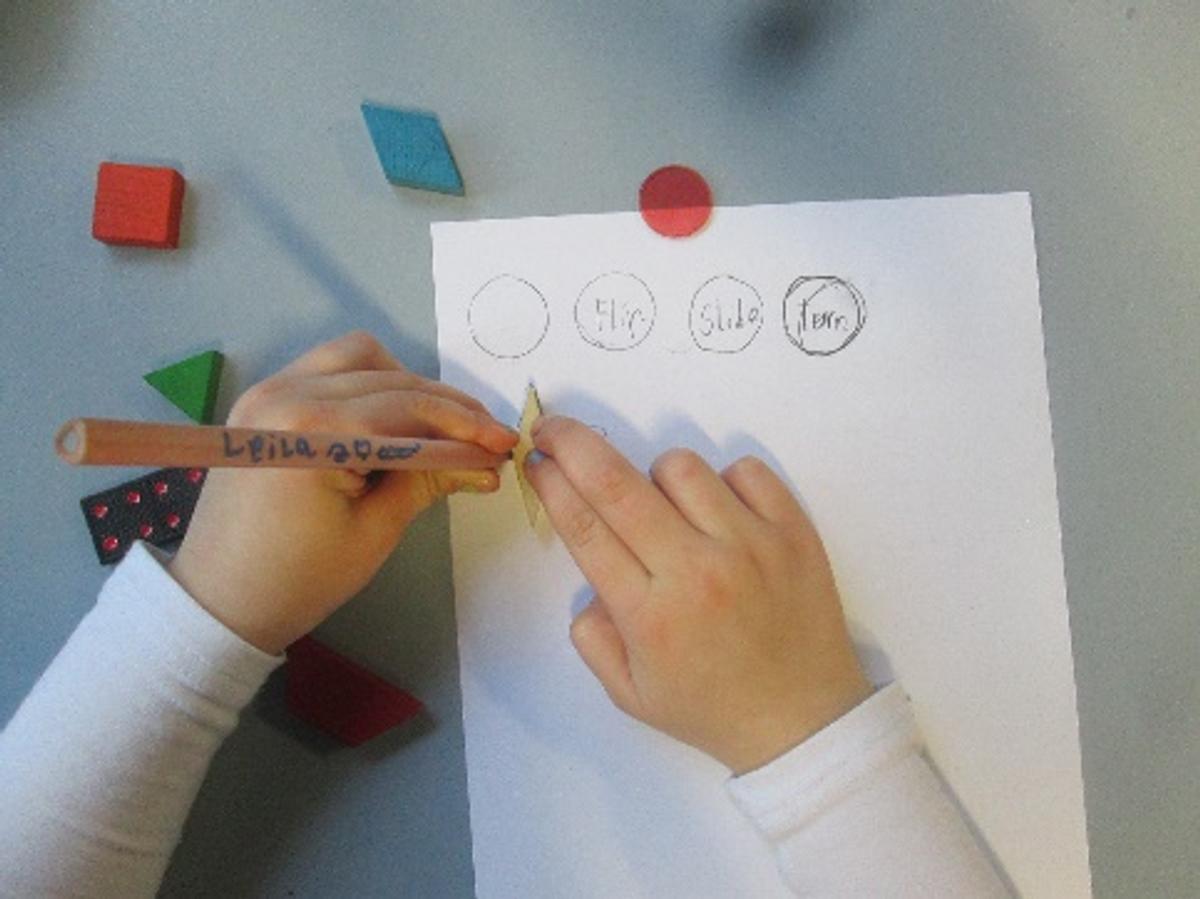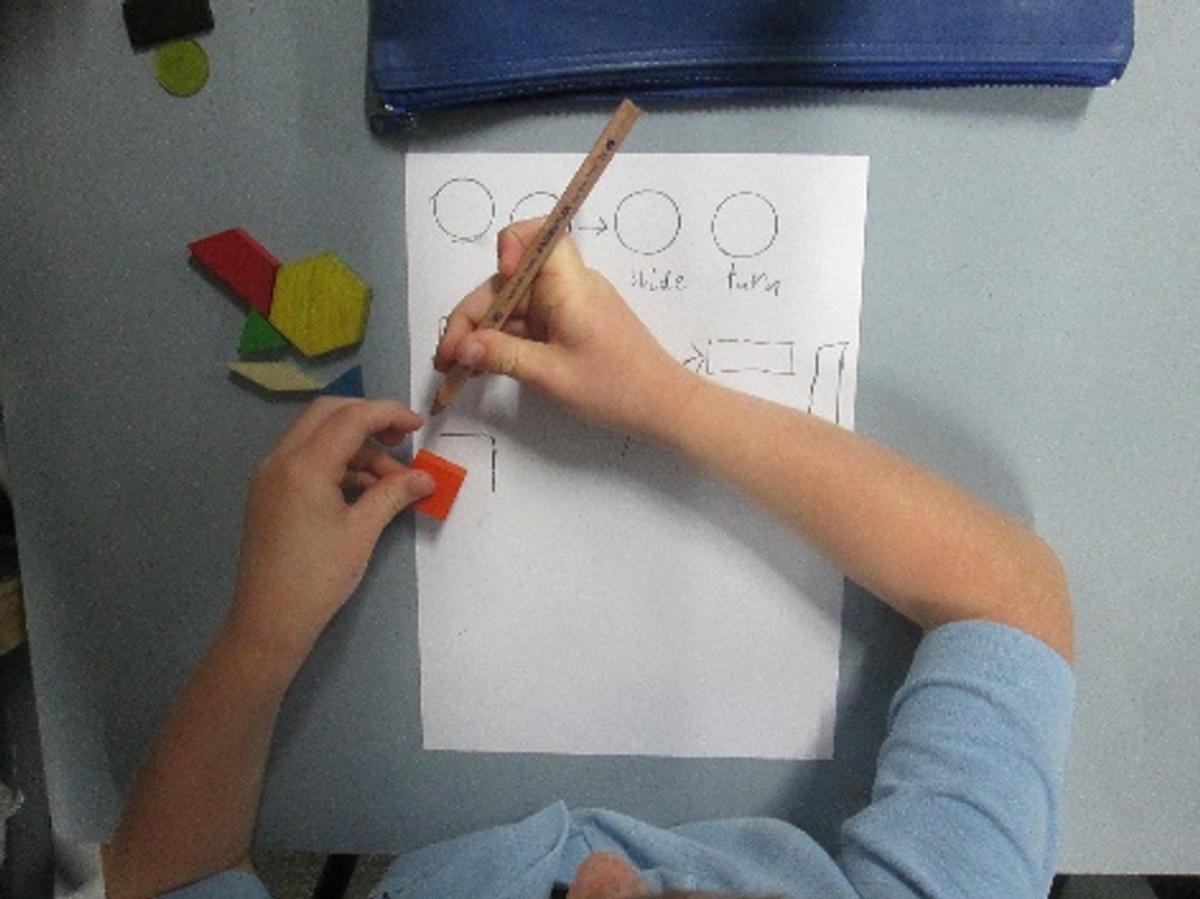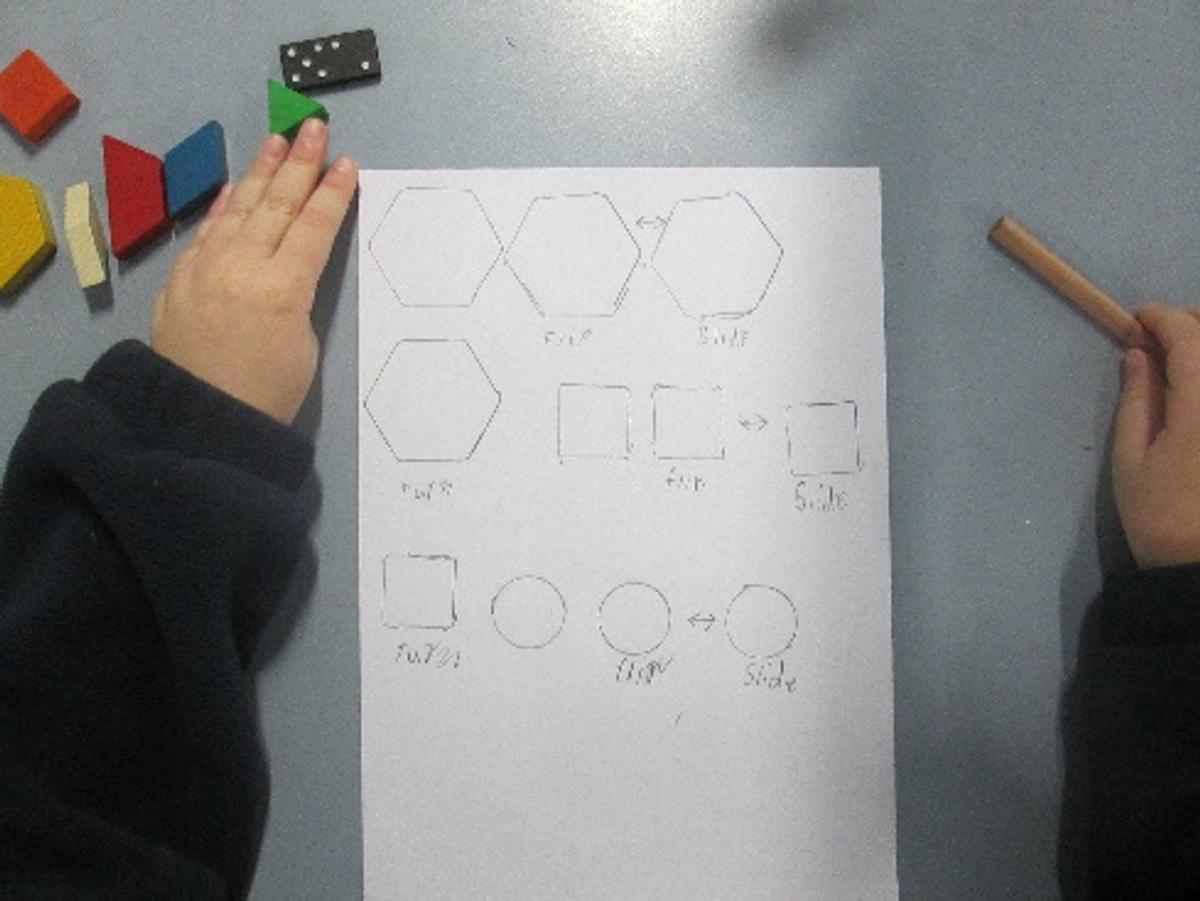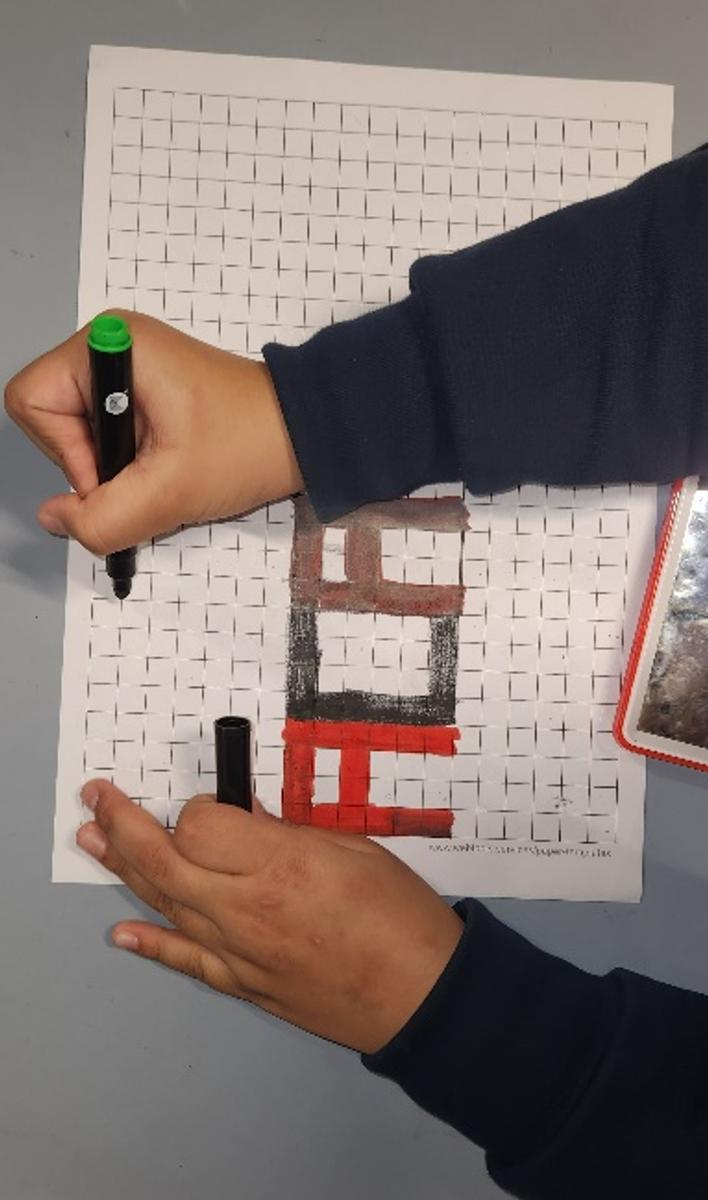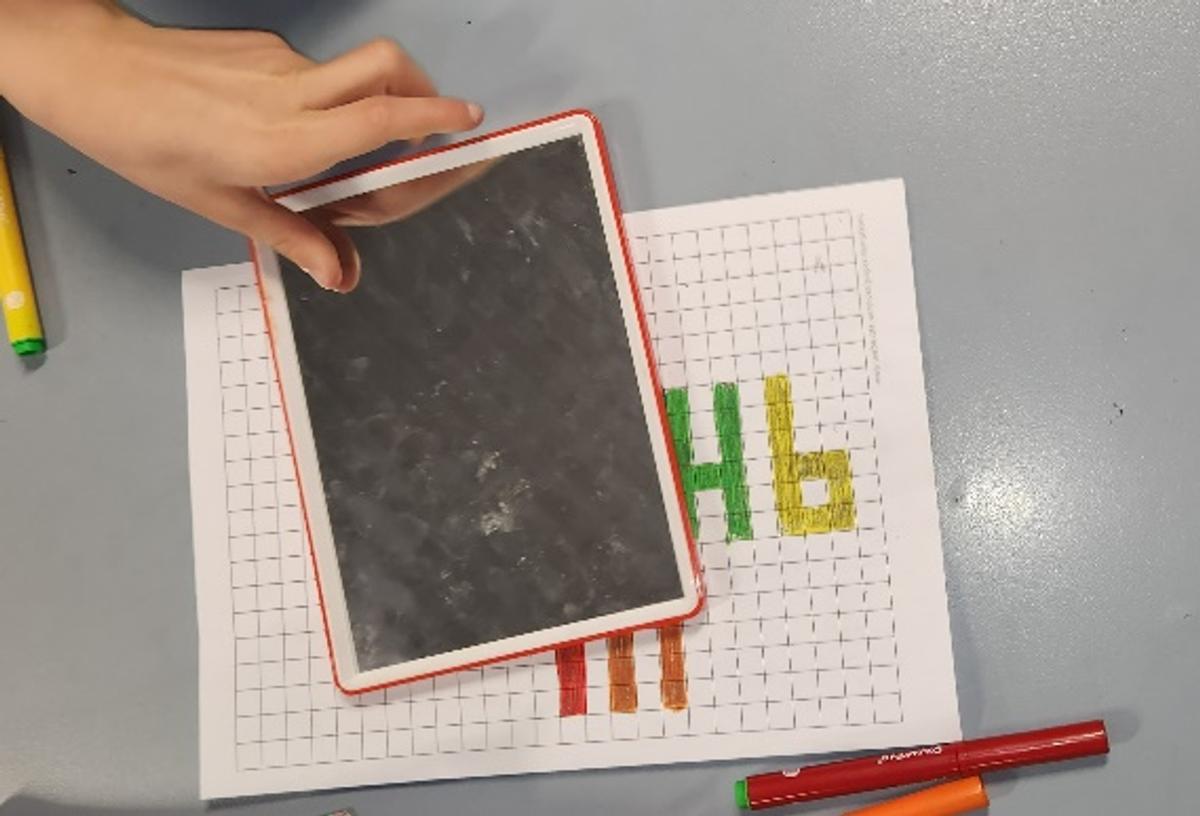Year 2 Bulletin
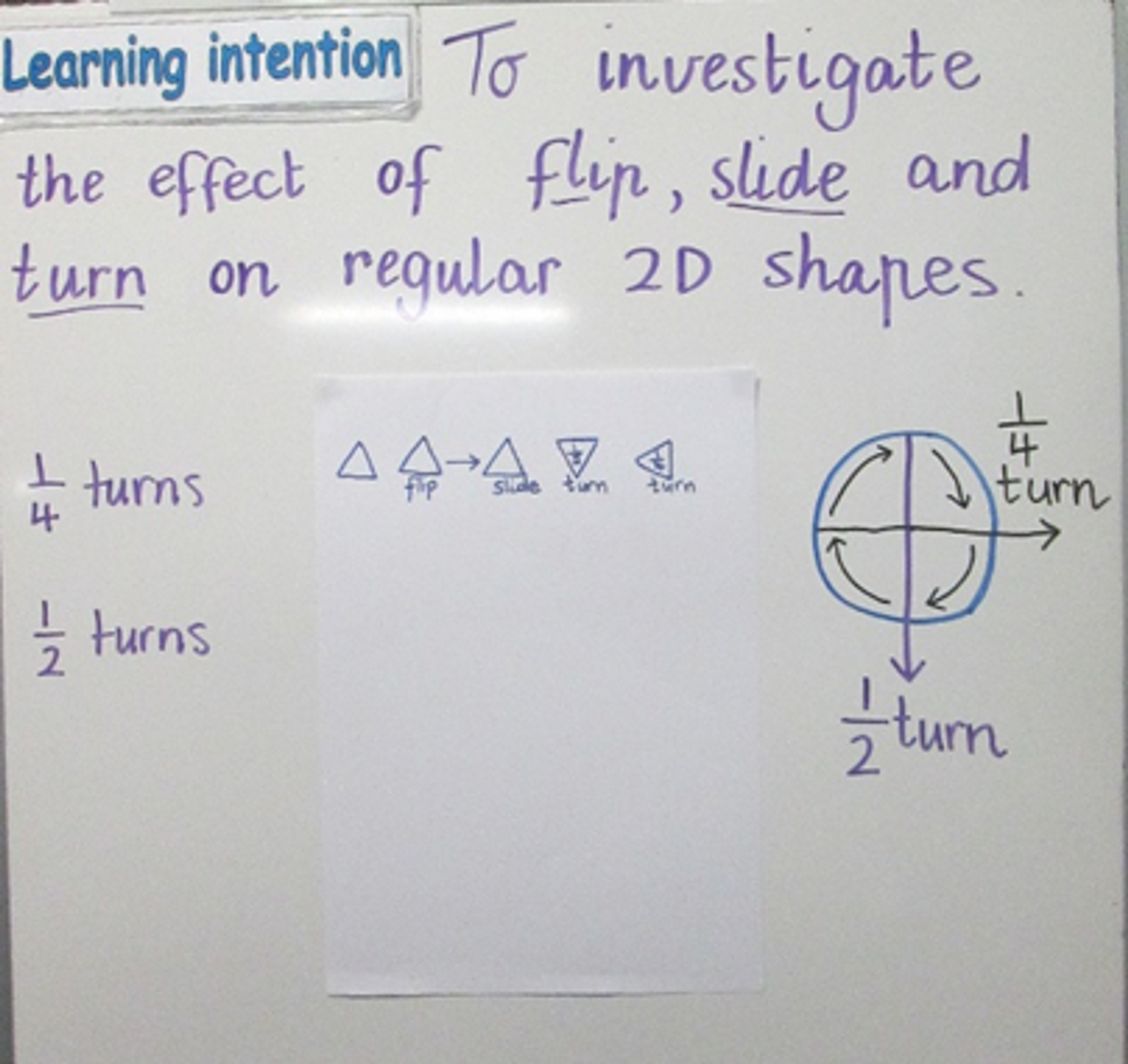
Maths
Geometric Properties
Learning Intention
To investigate the effect of flip, slide and turn on regular and irregular shapes.
Learning experience overview
We have been exploring the properties of 2 Dimensional shapes and 3 Dimensional solids. The students have engaged in hands-on experiences investigating, building shapes and using Mathematical language to describe and classify regular shapes and solids including:
- straight/curved sides
- cubes, prisms, cones, spheres, cylinders, pyramids
- edges, vertices and faces
For this activity the students began by exploring regular shapes and their transformation using a flip, slide, ¼, ½ and full turns. They traced then ‘acted-out’ each transformation, tracing and labelling each example. The students identified and recorded the changes (if any) observed.
We asked them to reflect on their own learning, highlighting areas discovered and problems encountered.
In subsequent sessions, the students investigated transforming irregular shapes, including capital and lower-case letters of their name. They used graph paper and mirrors to create a reflection (flip) of their initials.
Prompts/questions/responses
- What did you notice about using regular/irregular shapes?
- What did some shapes have in common? How were they different?
- What helped you most?
- Could you see any patterns/similarities?
- How does a shape change using a mirror?
What you can do now at home, to continue the learning from this experience
- Look for shapes and patterns around you, especially examples of transformation, where shapes have been flipped or turned. i.e tiles
- Find things in your home that are 3D shapes as real life examples. i.e cereal boxes, tinned food, ice cream cones…
- Calculate the number of edges, faces and vertices on found items.
- Make a table/graph of the number of cubes, prisms, cones, spheres, cylinders, pyramids found at home.
Rosanna, Jocelyn, Pauline and Rachel
Year 2 Team

